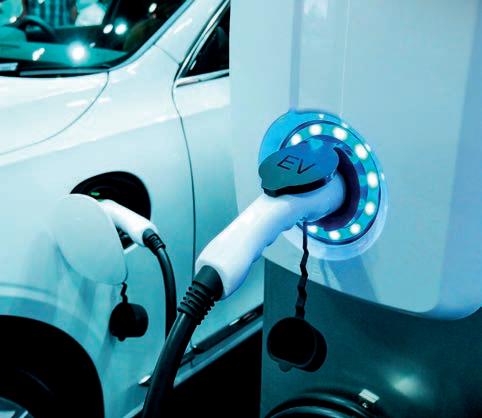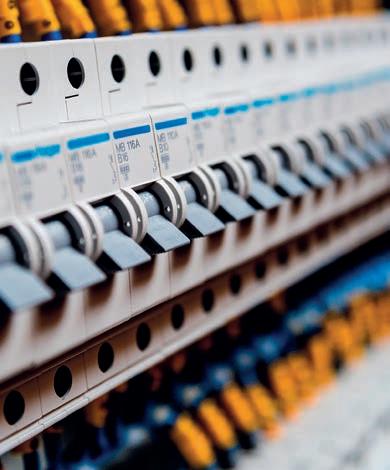
5 minute read
A handy guide to EICRs
from ECN March 2021
Gary Parker, ECA Technical Manager, dives into the rationale behind the different codes that make up an EICR, and what they all mean.
With the second Amendment to the 18th Edition Wiring Regulations just around the corner, it’s as important as ever to stay up to speed with the different codes that make up those all-important electrical installation condition reports (EICRs).
Advertisement
To demystify the nuances of which codes apply to which faults, and to help you carry out smoother inspections, read on.
Who decides?
The inspector is the only person who can make an informed decision about what code is suitable in any given situation. This is because they are on-site and can see defects first-hand and make an informed call on how safe an installation is.
As an aside, it is important to note that any item raised should be set against the requirements of the Wiring Regulations (BS 7671:2018), not against the inspector’s personal judgement or preferences.
Is it a type of risk assessment?
Indeed it is. When considering what code is relevant to any given situation, the inspector needs to consider the environment and the potential risk of damage or injury.
So, simply saying that scenario ‘x’ results in outcome ‘y’ is not always suitable. A nuanced decision-making process is required. To do this, we must first look at what the codes actually mean.
• C1 – Danger present: in this scenario, there is an immediate danger of shock or fire to persons, property or livestock. • C2 – Potentially dangerous: in this scenario, there is a fault that could potentially become dangerous (a hazard), but another fault or foreseeable action must occur in order for danger to arise. • C3 – Improvement recommended: in this scenario, there is a defect against BS 7671, but it does not present any immediate or potential danger to people or property.
The decision tree, right, expands this further.
Decision tree for selecting an appropriate code during an EICR
Codes have consequences
It is extremely important to understand the consequences of any code raised during an EICR.
For instance, both a C1 and C2 result in an ‘unsatisfactory’ outcome. Therefore, overzealous use of these codes can potentially cause unwarranted disruption to the client, their building and possibly their business.
For example: if an installation is found to be lacking RCD protection for socket outlets, most guidance would recommend a C3 code. Should a contractor decide to instead raise a C2, then the client could be looking at a significant cost or inconvenience. Of course, BS 7671 does take account of cost, and cost must not dictate decisions concerning electrical safety. But the safety, practical and cost implications of getting a code wrong, whichever way it may be, can be highly significant.
An inspector should not reduce a code from a more serious to a lesser code just because the client would like it that way. The inspector has been employed as a technical expert in electrical safety and must not let their professional decisions become compromised by any external influence.
It is of course essential that the inspector is well-versed in the requirements of the latest version of the Wiring Regulations. If need be, before raising a coded item, the inspector should always be in a position to reference a BS 7671 Regulation number on the issue in question, particularly if challenged.
A PERCEIVED DEFECT IS LOCATED
C1
Recommend urgent action
C2
Although there is no immediate risk, action is taken as a matter of urgency to remedy the defect YES
YES
Does it present an imminent danger, to the persons using the installation, from shock or fire?
NO
Could this defect become dangerous if a fault or other foreseeable defect were to occur?
NO
C3
Consider upgrading the installation
Only defects against BS 7671 should be recorded
The EICR is aimed specifically at defects against the requirements of BS 7671. The inspector should not raise a code against any defects noticed against other British Standards. They are, however, at liberty to raise comments or make notes about other issues or defects and to inform the client.
Take the example of defective emergency light fittings. If they do not present any electrical hazard to the user, they are effectively safe and should not appear as a coded item on an EICR. However, this scenario may show a departure from BS 5266. In this case, it may be useful to inform the client on a separate document.
The last word
Guidance material cannot take the place of the skill, knowledge and experience of the inspector. The ultimate decision is down to them. The recognised industry guidance is only a guide. It can be deviated from if the inspector is able to credibly present the reasons for doing so.
For more information on EICRs (and any other electrotechnical issue), ECA’s technical assistance helpline is open to ECA Members and can be found at eca. co.uk/myECA.
ECA, eca.co.uk
GTC 400 C PROFESSIONAL THERMAL CAMERA
Make the invisible visible ▶ Measuring range -10°C to +400°C ▶ Big 3.5" colour display to display measurements ▶ Infrared sensor resolution of 160 x120 (19,000 single measurement points) ▶ Visual camera integrated to save real image together with thermal images
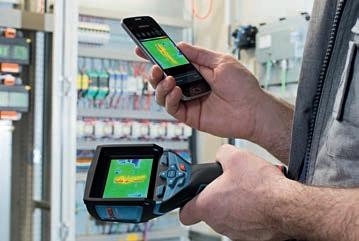
GTC 400 C BOSCH PROFESSIONAL THERMAL CAMERA
Precise. Reliable. Effi cient.
It’s in your hands. Bosch Professional.
Large 3.5" Display
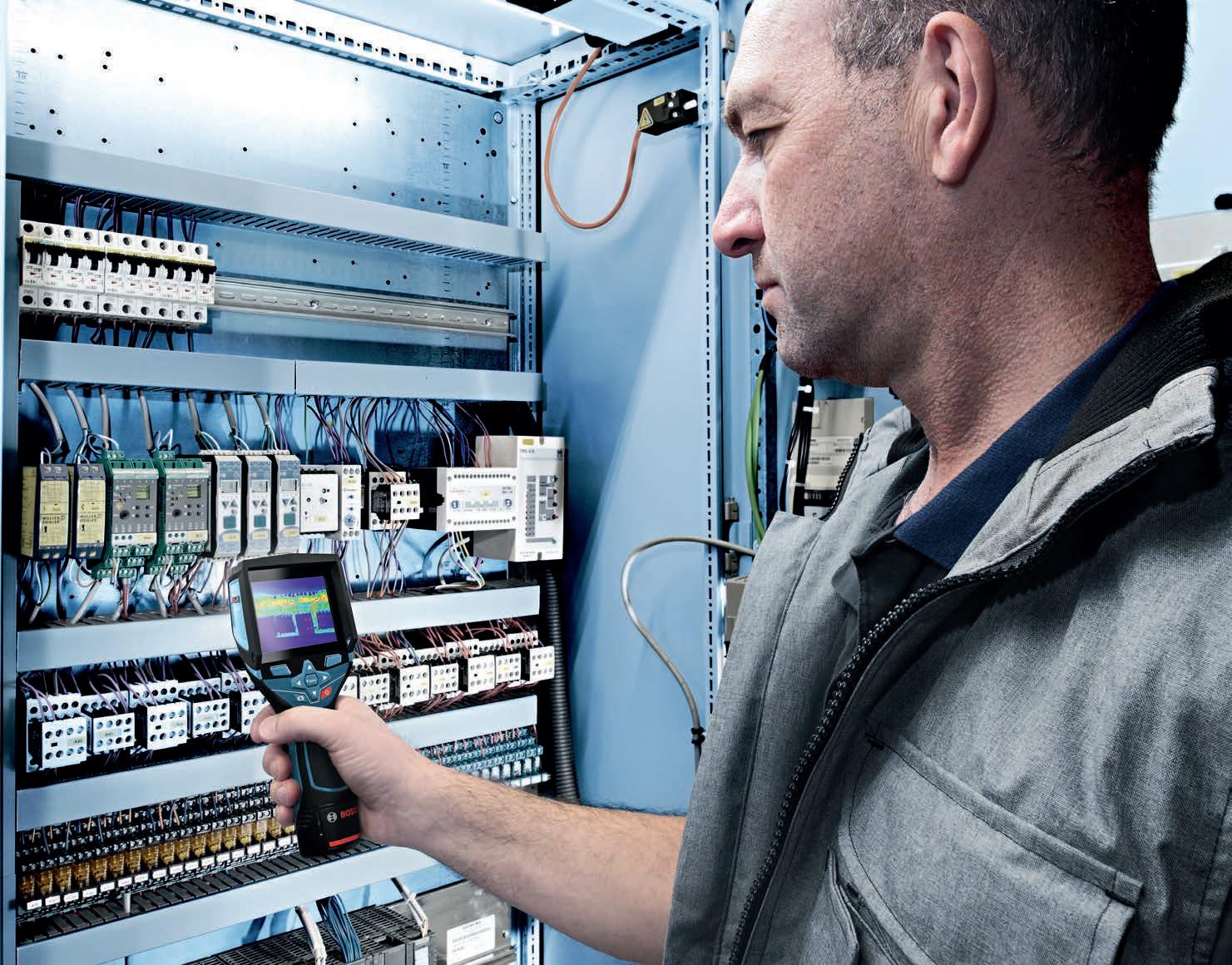
For clear readability with overlay thermal and real images to clearly understand and contrast fi ndings. Ensures high-quality work conducting tasks like checking in and outfl ow and checking fuse boards for overheated parts.
Dual Power Source
Flexible power supply using the Bosch 12 V batteries from the blue family or 4 x AA batteries for versatility on site.

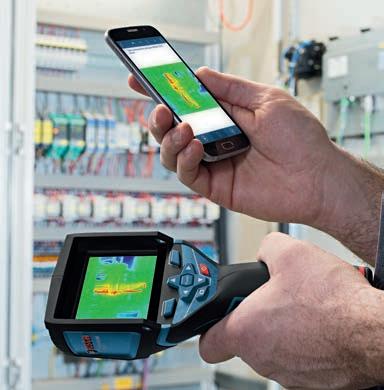
Simply Connected
Download thermal measurements via the GTC 400 C’s WI-FI hotspot to your smartphone or Micro USB to laptop. Communication with clients can be simplifi ed to show markers and highlight fi ndings.
Robust IP 53 Housing
IP53 protection makes the GTC dust and splash proof for added security on site.








